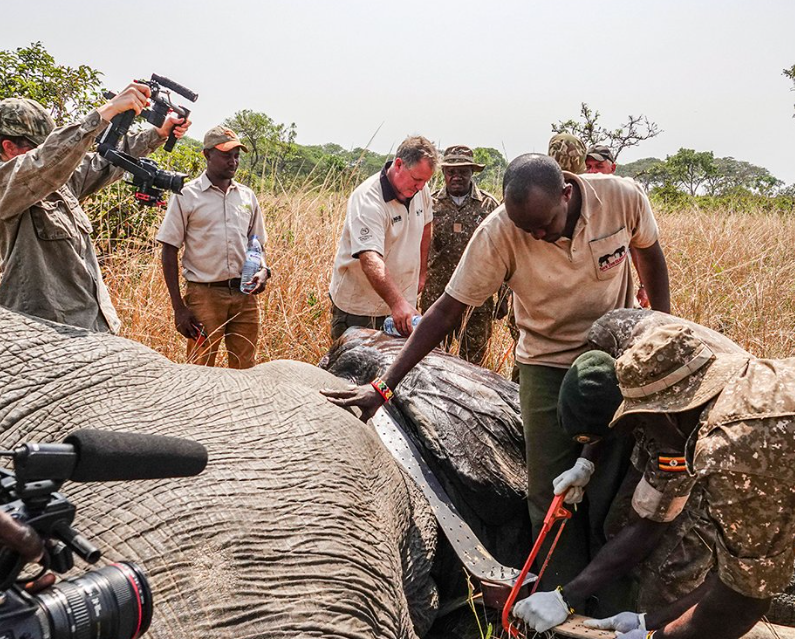Conservation partners from Uganda and Kenya have launched a cross-border elephant collaring mission across the vast landscapes of Kidepo, Karamoja, and Turkana. The operation aims to collar twenty elephants with GPS-enabled satellite transmitters, helping conservationists understand seasonal migration patterns, land-use overlaps, and mitigate the increasing conflict between elephants and agriculture.
Led by the Uganda Wildlife Authority , Kenya Wildlife Service , and the Kenya Wildlife Research and Training Institute, the initiative is supported by a consortium of conservation groups including Uganda Conservation Foundation (UCF), Northern Rangeland Trust , Wild Landscapes International , Save the Elephants , and airborne support from Tropic Air and the Mara Elephant Project.
With scorching heat and rugged terrain as a backdrop, helicopters, fixed-wing aircraft, and ground teams are working in perfect synchrony to safely tranquilize elephants, fit them with tracking collars, and monitor their recovery all within seconds. Each collar feeds real-time data into EarthRanger , a high-tech wildlife monitoring system implemented nationally by UCF.
This mission is partly funded by the European Union’s NaturAfrica programme and further supported by Wild Landscapes International. It reflects a shared vision of protecting biodiversity across borders while enhancing peaceful coexistence between people and wildlife.
Among the remarkable team are three young wildlife veterinarians, mentored through UCF. One of them, Dr. Singoma, a seasoned vet with over 500 animal rescues under his belt, shared:
“I’m living my dream. Being part of this mission is a once-in-a-lifetime experience, and I’m learning every day.”
Behind the scenes, GIS analysts, human-wildlife conflict officers, project managers, and communications teams are working tirelessly to ensure the mission’s success and share its unfolding story with the world.
As land use shifts and pressure on natural spaces grows, the data collected from these elephants will be critical for informed planning and the long-term survival of one of Africa’s most iconic species.























